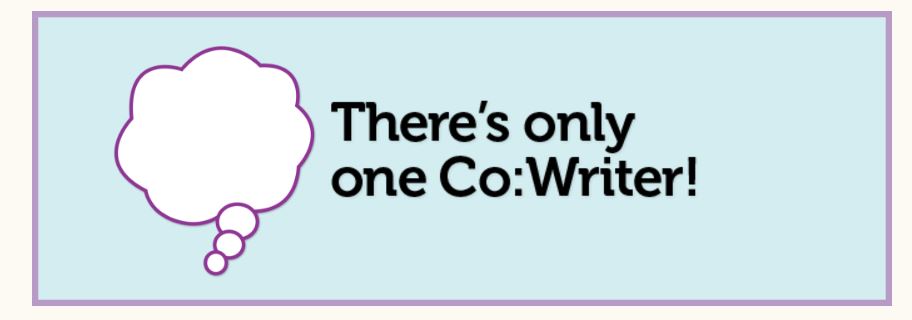Written by: Luke Hsieh, Community Access Center Assistive Technology Advocate
When it comes to Word Prediction Software; none is, perhaps, better marketed than CoWriter by Don Johnston. Like Dragon Naturally Speaking by Nuance is for speech recognition, CoWriter by Don Johnston is often the first thing an AT professional think of when Word Prediction is being discussed. In case there is still  anyone out there that doesn’t know what a Word prediction software is, it’s what we often use when we type on the smartphone and other mobile devices. The little bar above the smartphone keyboard that guesses what we are trying to type is called, Word Prediction; and before the advent of the smart devices and their touch screens, Word Prediction Software had already been widely used by people with disabilities to make typing less of a pain.
anyone out there that doesn’t know what a Word prediction software is, it’s what we often use when we type on the smartphone and other mobile devices. The little bar above the smartphone keyboard that guesses what we are trying to type is called, Word Prediction; and before the advent of the smart devices and their touch screens, Word Prediction Software had already been widely used by people with disabilities to make typing less of a pain.
I first saw CoWriter on ABC News in early 2009, and its selling point was the copious vocabularies it is capable of predicting. It could be used by anyone from K12 to Postgraduate College. I have always wanted to try the famous software, but $250-$400 was more than my meagre budget, so I opted for less costly alternatives. However, with the advent of ubiquitous super-fast Internet; software companies have come up with a novel way of licensing their products. Instead of selling a life-time package of a single version; you can now use the software on a subscription bases. You pay a regular subscription fee, and as long as the subscription is current, you get to use the latest version of the said software. So, while I might have been unwilling to pay $250 on a Word Prediction Software, I am perfectly willing to pay a $5.00 monthly fee for the privilege to try out the supposedly best Word Prediction Software on the market.
My verdict after composing this article: I like it, I like it very much, and am likely to keep the Subscription going. It takes a bit of getting used to, but the combination of Word Prediction and Text-to-Speech on a Microsoft Office really makes typing a lot more fun. Also, the Subscription model seems to have become a trend: Microsoft Office 360, Dragon Anywhere, and Norton 360 all follows this model. The upside of the Subscription model is that the software follows you and grows with you, no more buying new versions every two years, no more compatibility issues every time Microsoft rolls out a new Windows. There is a distinct possibility that the Subscription model will make assistive technology software packages more affordable.
The downside of the Subscription model is, of course, the Internet; since the Internet is needed for the software to recognize who you are, and everything is up in the clouds; may the universe have mercy on you, shall you find yourself without an Internet Connection.





